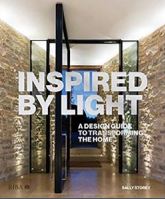Share
19.09.2012
TATE MODERN’S SURREALIST COLLECTION
Posted by Lighting Design International on 19 Sep 2012

Here are some images of a recent visit to the Tate blackout event held after closing time in the Tate Modern’s Surrealist Collection. The lighting in the gallery was switched off and visitors were invited to walk around the collection in the dark solely lit with hand held LED “Little Sun” torches, designed and developed by Olafur Eliasson and Frederik Ottesen.
Visiting the gallery in the dark was a very personal experience with visitors either discovering the works of art individually, almost like a private tour, and other visitors getting together to view exhibits together.


Photo Credit: failing_angel
The visit made me think of how interior spaces we encounter everyday are frequently over-lit with a multitude of lighting effects competing for the viewers attention. With so many effects in one space the observers field of view one can often become cluttered and uninteresting.
A recent experience in my home brought this to my attention when a few lights in the main room, which was usually uniformly lit, was left with just two functioning spotlights out of six. The result was that the room was much more dramatically lit with higher contrast between the highlighted areas and the areas left in shadow.

Photo Credit: failing_angel
Now I am hardly revealing anything new here, modeling of objects and spaces using highlights and shadows is commonly used especially in theatre and exhibition lighting, however this is not generally something we associate with lighting in our own homes.

From these recent experiences, why not have a go at lowering the regular level of light in an area of your home, perhaps experiment with turning off one or more of the light sources or re-directing a spotlight to highlight a previously unlit feature in a room. Welcome the shadows in and add some theatricality to the space. It might change your perspective of the space and inspire you to change the lighting again and again.











